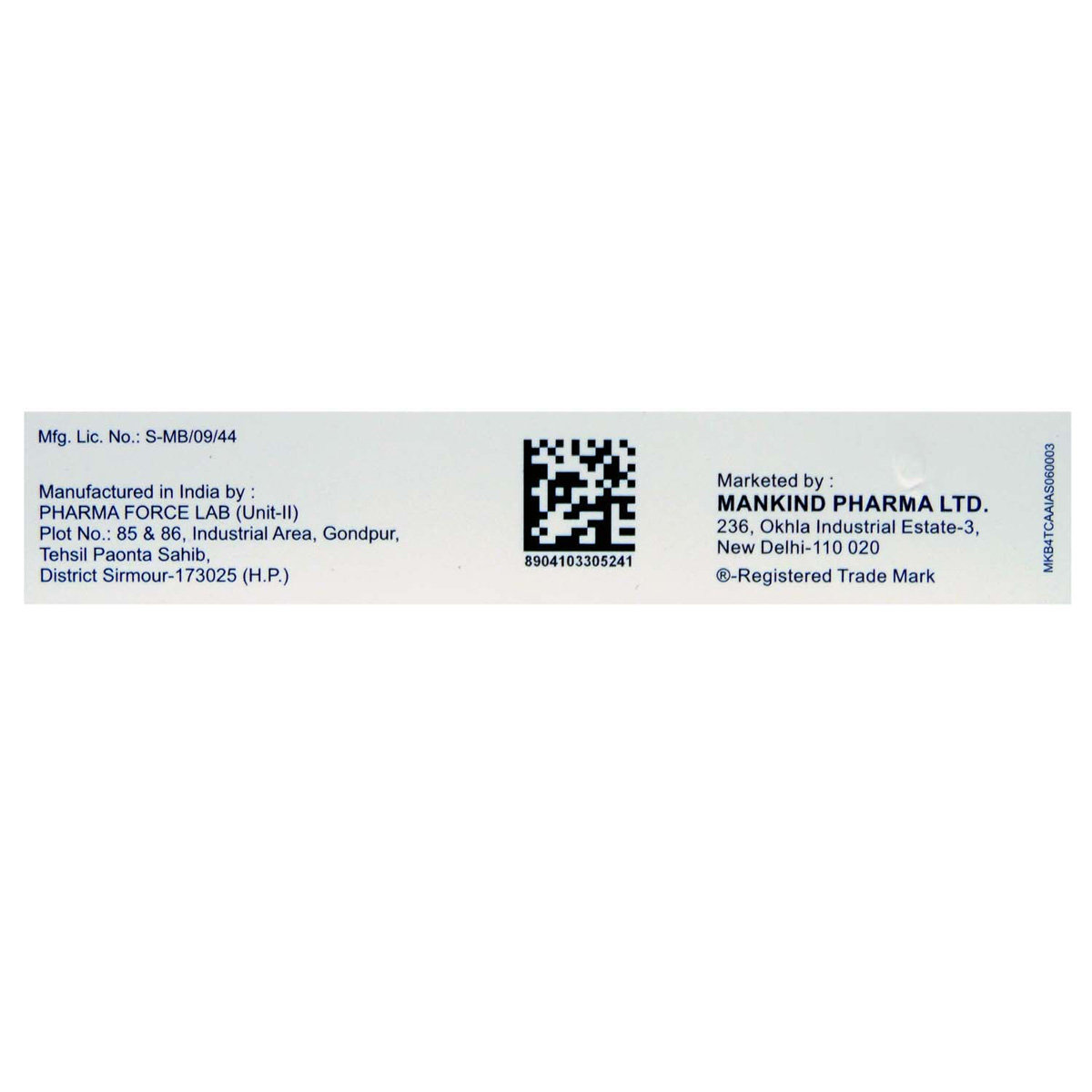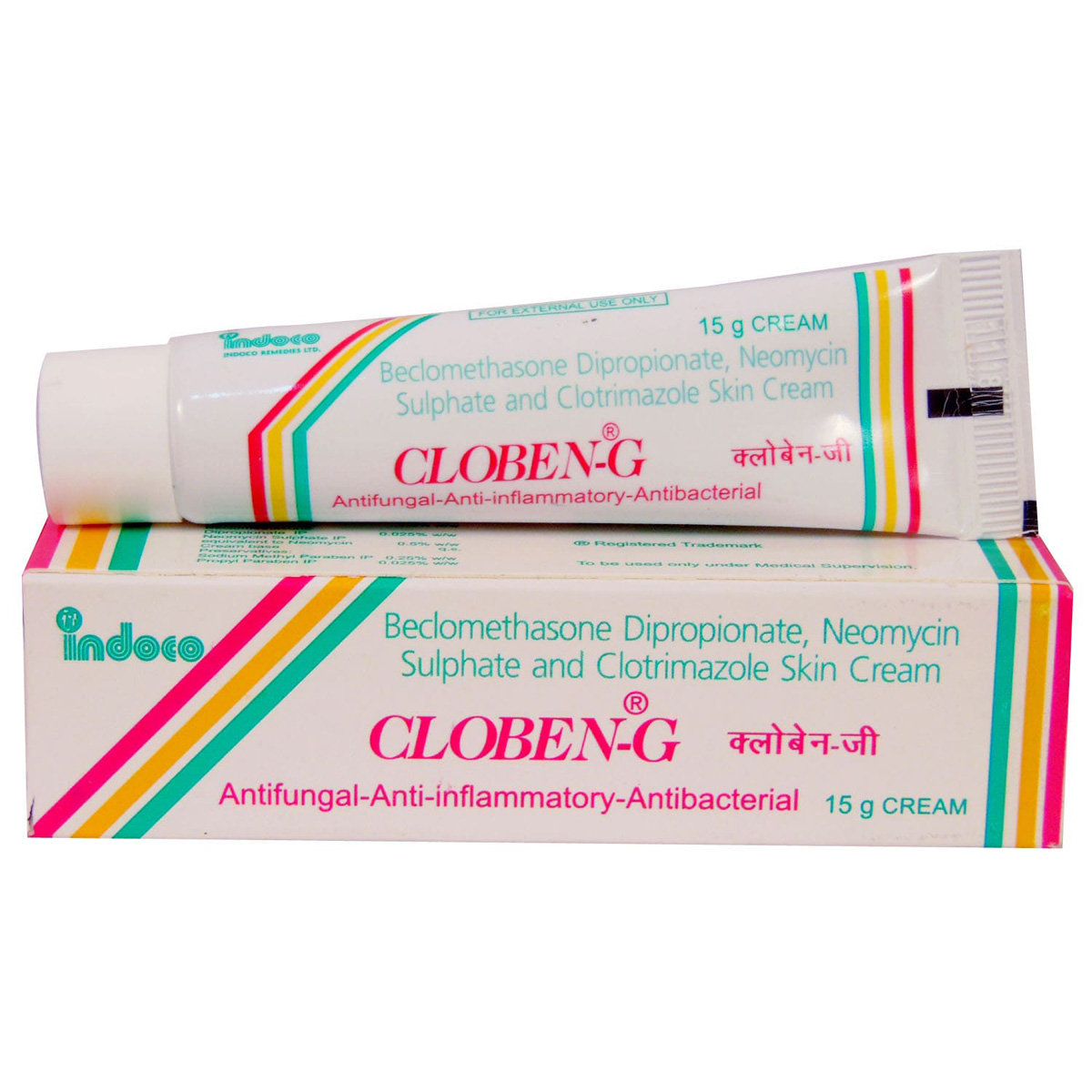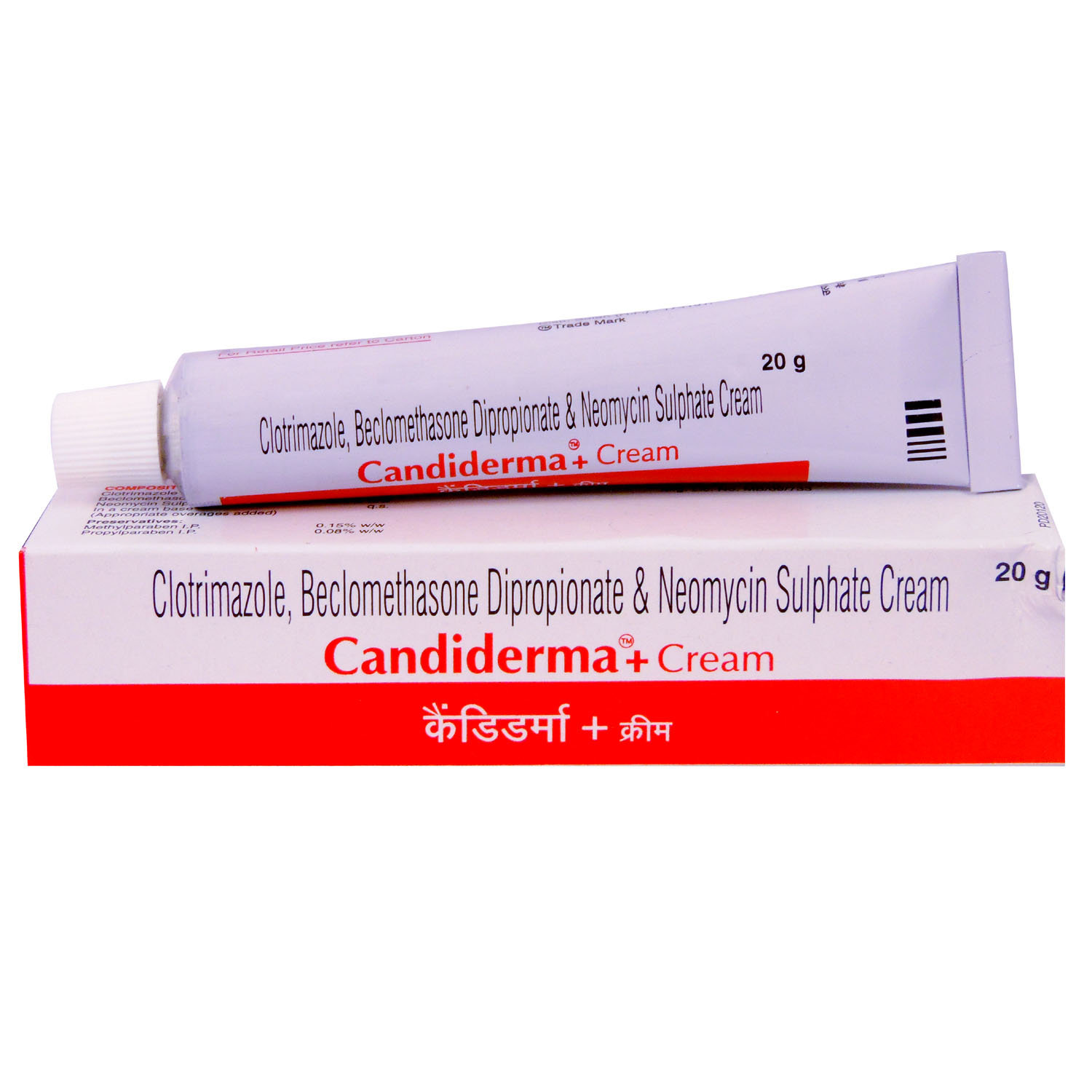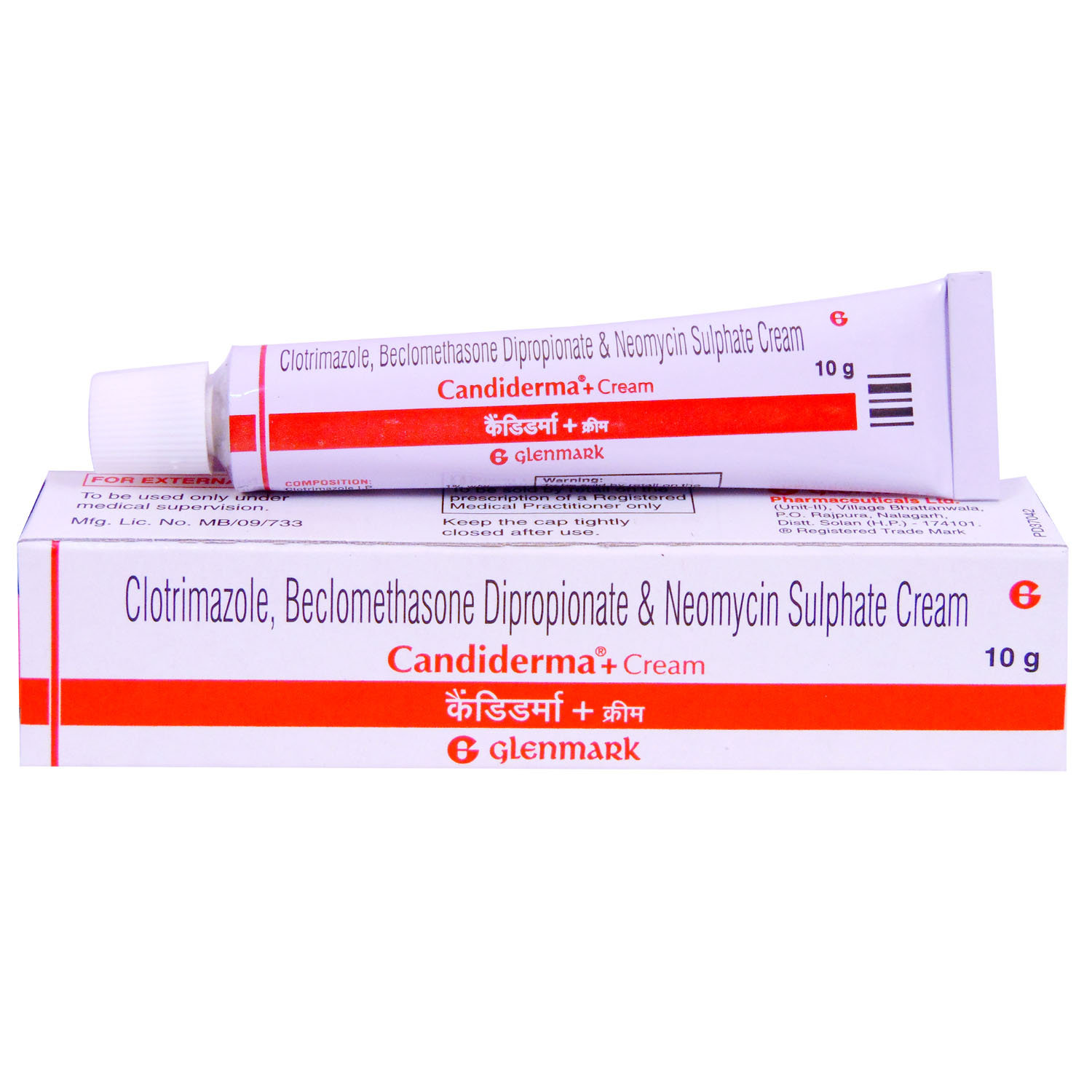Quaridram Cream 5 gm


MRP ₹33.5
(Inclusive of all Taxes)
₹5.0 Cashback (15%)
Provide Delivery Location
Online payment accepted
 Prescription drug
Prescription drugWhats That
Manufacturer/Marketer :
Consume Type :
Expires on or after :
Return Policy :
About Quaridram Cream 5 gm
Quaridram Cream 5 gm is a combination of medicine primarily used to treat fungal and bacterial skin infections. It treats skin inflammation due to allergies or irritants, eczema (inflamed, itchy, cracked and rough skin patches), psoriasis (skin cells multiply rapidly to form bumpy/uneven red patches covered with white scales), insect bites and stings. Bacterial infection occurs when harmful bacteria grow in the body and causes infection. Fungal infection is caused when a fungus invades and affects the tissue on the skin.
Quaridram Cream 5 gm is composed of three medicines: Clotrimazole, Neomycin and Beclomethasone dipropionate. Clotrimazole stops the growth of fungi by causing damage and leakage to the fungal cell membrane. Neomycin prevents the synthesis of essential proteins required by bacteria to carry out vital functions and has broad-spectrum activity against aerobic gram-positive and gram-negative bacteria. Beclomethasone dipropionate is a corticosteroid and blocks prostaglandin's production (chemical messengers) that make the affected area red, swollen and itchy.
Your doctor will advise the appropriate dose that suits your infection. Quaridram Cream 5 gm is for topical (for skin use) only. If the medicine gets into your eyes, nose, or mouth, rinse with cold water. Common side effects of Quaridram Cream 5 gm include redness, itching, dryness and a burning sensation at the application site. Most of these side effects do not necessitate medical attention and gradually resolve over time. However, if the side effects persist or worsen, please consult a doctor.
Let your doctor know if you are allergic to any of the ingredients. Do not use Quaridram Cream 5 gm on open wounds, blisters and lesions. Do not put a dressing or bandage on the affected area since it increases the risk of side effects. Please check with your doctor before using Quaridram Cream 5 gm if you have dehydration problems, cataracts or glaucoma, diabetes, gastrointestinal diseases, hearing problems (ototoxicity), osteoporosis (weak and brittle bones), muscle weakness, liver and kidney diseases. Pregnant and breastfeeding mothers should consult the doctor before starting Quaridram Cream 5 gm.
Uses of Quaridram Cream 5 gm
Directions for Use
Key Benefits
Quaridram Cream 5 gm is used to treat fungal and bacterial skin infections, skin inflammation due to allergies or irritants, eczema, psoriasis, insect bites and stings. Quaridram Cream 5 gm contains Clotrimazole (antifungal), Neomycin (antibiotic) and Beclomethasone dipropionate (steroid). Clotrimazole stops the growth of fungi by causing damage and leakage to the fungal cell membrane. Neomycin prevents the synthesis of essential proteins required by bacteria to carry out vital functions. Beclomethasone dipropionate blocks prostaglandin's production (chemical messengers) that make the affected area red, swollen and itchy. Together, Quaridram Cream 5 gm helps treat skin infections.
Storage
- Burning sensation is an abnormal side effect that needs medical attention. To relieve the burning feeling, your doctor may prescribe painkillers or antidepressants.
- Focused exercises can improve strength and reduce burning by soothing muscles.
- Change in lifestyle and improving nutrition can reduce the causes of burning sensation and provide relief.
- Your doctor may suggest nerve block injections as it is related to sensation in the skin.
- Burning feeling in a specific area would need mild electrical currents to reduce pain that targets the nerve affected. This practice must be done only if your doctor mentions it.
- Consult your doctor if you experience skin redness, itching, or irritation after taking medication.
- Apply cool compresses or calamine lotion to the affected skin area to reduce irritation.
- Stay hydrated by drinking plenty of water to help alleviate symptoms and keep your skin soothing.
- Monitor your skin condition closely and promptly report any changes, worsening symptoms, or concerns to your healthcare provider.
- Report the itching to your doctor immediately; they may need to change your medication or dosage.
- Use a cool, damp cloth on the itchy area to help soothe and calm the skin, reducing itching and inflammation.
- Keep your skin hydrated and healthy with gentle, fragrance-free moisturizers.
- Try not to scratch, as this can worsen the itching and irritate your skin.
- If your doctor prescribes, you can take oral medications or apply topical creams or ointments to help relieve itching.
- Track your itching symptoms and follow your doctor's guidance to adjust your treatment plan if needed. If the itching persists, consult your doctor for further advice.
- If you experience burning or stinging sensations and suspect that they may be related to medication, consult a doctor or healthcare expert to determine the cause and best course of treatment.
- Avoid harsh products, extreme temperatures, and other potential irritants that may exacerbate burning or stinging.
- Your healthcare professional may recommend applying a soothing or protective agent, such as a cream, gel, or ointment, to help alleviate burning or stinging.
- Follow your healthcare professional's advice on how to care for the affected area, as gentle cleaning and care instructions may vary depending on the location and severity of the burning or stinging.
- Schedule follow-up appointments with your doctor to monitor your symptoms and adjust your treatment plan as needed. If the burning or irritation persists or worsens, seek medical attention.
Drug Warnings
Before using Quaridram Cream 5 gm, let your doctor know if have a history of dehydration problems, cataract or glaucoma, diabetes, gastrointestinal diseases, hearing problems (ototoxicity), osteoporosis (weak and brittle bones), muscle weakness, liver and kidney diseases or allergic reactions to steroid medicines and antibiotics. Avoid smoking or going near naked flames since Quaridram Cream 5 gm can catch fire and burn easily. Avoid applying Quaridram Cream 5 gm on sunburns, lesions, blisters and open wounds. Quaridram Cream 5 gm is not for oral, ophthalmic (for the eye) or intravaginal use. Let your doctor know if you are pregnant or breastfeeding.
Drug-Drug Interactions
Drug-Drug Interactions
Login/Sign Up
Drug-Food Interactions
Drug-Food Interactions
Login/Sign Up
Diet & Lifestyle Advise
- Use mild soap while taking baths and prefer warm baths.
- Always wear loose-fitting clothes to avoid the further spread of the fungal infection.
- Regularly change your socks and wash your feet. Avoid shoes that make your feet sweaty and hot.
- Do not walk barefoot at places like a gym to prevent fungal and bacterial infections.
- Do not scratch the affected area of the skin as it can spread the infection to other body parts.
- Avoid sharing towels, combs, bedsheets, shoes or socks with others.
- Wash your bed sheets and towels regularly.
- Avoid or limit the intake of alcohol and caffeine.
- Manage stress, eat healthily, drink plenty of water, exercise regularly and get plenty of sleep.
Side Effects of Quaridram Cream 5 gm
- Redness
- Itching
- Dryness
- Burning sensation
Habit Forming
Therapeutic Class
All Substitutes & Brand Comparisons
RX
Bnc Cream 20 gm
Zydus Cadila
₹84
(₹3.78/ 1gm)
37% CHEAPERRX
Nuforce-GM Cream 15 gm
Mankind Pharma Pvt Ltd
₹72
(₹4.32/ 1gm)
28% CHEAPERRX
Out of StockFourderm RF Cream 15 gm
Cipla Ltd
₹102
(₹6.12/ 1gm)
1% COSTLIER
Product Substitutes
Author Details
We provide you with authentic, trustworthy and relevant information
Drug-Diseases Interactions
Drug-Diseases Interactions
Login/Sign Up
FAQs
Quaridram Cream 5 gm consists of Clotrimazole, Neomycin and Beclomethasone dipropionate. Clotrimazole stops fungi's growth by causing damage and leakage to the fungal cell membrane. Neomycin prevents the synthesis of essential proteins required by bacteria to carry out vital functions. Beclomethasone dipropionate works by blocking prostaglandin's production (chemical messengers) that make the affected area red, swollen and itchy.
Quaridram Cream 5 gm is for external use only. Avoid contact with eyes. If Quaridram Cream 5 gm gets into your eyes, nose, mouth or vagina, rinse with water. Do not put a bandage or a dressing on the affected area while using Quaridram Cream 5 gm unless advised by the doctor. Do not apply Quaridram Cream 5 gm on sunburns, open wounds, lesions and blisters.
Quaridram Cream 5 gm should be used with caution and under doctor's supervision if you have dehydration problems, cataract or glaucoma, diabetes, gastrointestinal diseases, hearing problems (ototoxicity), osteoporosis (weak and brittle bones), muscle weakness, liver and kidney diseases.
Quaridram Cream 5 gm consists of beclomethasone dipropionate that can cause a rise in blood sugar levels by suppressing insulin secretion. Hence it is advised to consult your doctor before starting Quaridram Cream 5 gm if you are diabetic. Monitor your blood glucose levels regularly.
You are required to maintain at least a three-hour gap after the application of Quaridram Cream 5 gm if you are using more than one topical product.
Please do not stop using Quaridram Cream 5 gm on your own, even if the symptoms are relieved. Your symptoms may improve before the skin infection is completely cured. Continue the usage of Quaridram Cream 5 gm until the course advised by the doctor is finished.
Drug-Drug Interactions Checker List
- BUDESONIDE
- FORMOTEROL
- RITONAVIR
- COBICISTAT
- FUROSEMIDE
- BACITRACIN
- POLYMYXIN B
Special Advise
- It is advised to reach out to your doctor if the infection symptoms persist or worsen after two weeks of treatment.
- Avoid contact with nose, mouth or eyes. If the product comes in contact with these areas accidentally, rinse with water thoroughly.
- Do not wash the treated areas for a minimum of 3 hours after you apply the cream.
Disease/Condition Glossary
Fungal infection: It is a skin disease in which a fungus attacks the tissue and causes infection. Fungal infections may be contagious (spread from one person to another). The symptoms of a fungal infection include scaly skin, blisters, itching, swelling, irritation and redness.
Bacterial infection: It is a condition in which harmful bacteria enter, infect and grow in the body. It can target any part of the body and multiply very quickly. Bacteria come in three basic shapes, namely spherical, rod or spiral-shaped. Bacteria may be gram-positive (have thick cell walls) or gram-negative (do not have cell walls).
Eczema: It is a condition in which skin patches become inflamed, itchy, cracked and rough.
Psoriasis: It is a skin disorder in which skin cells multiply and form bumpy (uneven) red patches covered with white scales.

Have a query?
Buy best Dermatology products by
Others
AYUR
FIXDERMA
BIODERMA
VENUSIA
CANDID
SELSUN
ABZORB
ATODERM
CIPHANDS
KETO
MINTOP
UVAVO
8X
MELALUMIN
MORR
OILATUM
REJUHAIR
SUNCROS
TETMOSOL
UNISON
UV DOUX
ATBRO SAFEXX
BETADINE
COLOPLAST
DR. MOREPEN
HAIR 4U
LA SCREEN
MEDERMA
RING GUARD
SHYN-ON
SOLSET
SUNSTOP
YUVINIE
A-DERMA
AHD
ALCONANZ
AQUAHOLD
AVARTA
AVENE
BIOLINE
BIOWRIGHT
CETRILAK
CUTICOLOR
CUTILOCK
DANDEL PLUS
DEOPHIN
DOUX
DYSIS
ENMASK 50
EXIZOL
FAIR INSTA
GETRYL
GORGEUS
GUNEERA
HAIR YUTH
HH MITE
I-GLOW
ITCH GUARD
KETOFLY
KETOMAC
KETOPZ
KETOSTAR
KZ
LIPZ
MANKIND
MEDRAYS
MELAGARD
MELNORA BLUV
MICROSTERILE
NO SCARS
OAKNET
ONABET
PARASOFT
PERCOS
PHOTON
PHOTOSTABLE
PHYSIOGEL
PROTEK
RADIBAN
RASHFREE
REGALIZ
RENOCIA
SALISIA
SEBANDRO
SEBORBAR
SESTRY
SOLASAFE
SOLECROSS
STERILLIUM
SUDERMA
SUN KROMA
SUNCLIP
SUNHEAL
SUNMATE
SUNTRIS
TAIYU
TEDIBAR
THERUPTOR
TRICOGRO
Glenmark Pharmaceuticals Ltd
Sun Pharmaceutical Industries Ltd
Klm Laboratories Pvt Ltd
Cipla Ltd
Canixa Life Sciences Pvt Ltd
Abbott India Ltd
Ajanta Pharma Ltd
Intas Pharmaceuticals Ltd
Dr Reddy's Laboratories Ltd
East West Pharma India Pvt Ltd
Alkem Laboratories Ltd
Atopic laboratories Pvt Ltd
Hegde & Hegde Pharmaceutica Llp
Brinton Pharmaceuticals Ltd
Torrent Pharmaceuticals Ltd
Amwill Healthcare Pvt Ltd
Leeford Healthcare Ltd
Palsons Derma Pvt Ltd
Oaknet Healthcare Pvt Ltd
Med Manor Organics Pvt Ltd
Micro Labs Ltd
Dermocare Laboratories Gujarat Llp
Fixderma India Pvt Ltd
Apex Laboratories Pvt Ltd
Mankind Pharma Pvt Ltd
Ipca Laboratories Ltd
Yaher Pharma
Systopic Laboratories Pvt Ltd
Menarini India Pvt Ltd
Ethinext Pharma
Nemus Pharmaceuticals Pvt Ltd
Skinocean Pharmaceuticals
Dermacia Healthcare
Inex Medicaments Pvt Ltd
Lupin Ltd
GlaxoSmithKline Pharmaceuticals Ltd
Talent India Pvt Ltd
Zydus Cadila
Kivi Labs Ltd
Zydus Healthcare Ltd
Hbc Dermiza Healthcare Pvt Ltd
Mrhm Pharma Pvt Ltd
Regaliz Medicare Ltd
Sol Derma Pharmaceuticals Pvt Ltd
Newtrimed Healthcare Pvt Ltd
Wallace Pharmaceuticals Pvt Ltd
Eskon Pharma
Glowderma Lab Pvt Ltd
La Pristine Bioceuticals Pvt Ltd
Mohrish Pharmaceuticals Pvt Ltd
Percos India Pvt Ltd
Rockmed Pharma Pvt Ltd
Macleods Pharmaceuticals Ltd
Praise Pharma
Ethicare Remedies Pvt Ltd
Kaizen Drugs Pvt Ltd
Aurel Biolife
Rely On Pharmaceuticals
Wockhardt Ltd
Galcare Pharmaceuticals Pvt Ltd
Elder Pharmaceuticals Ltd
Indiabulls Pharmaceuticals Pvt Ltd
La Med Healthcare Pvt Ltd
Biocute Life Care
Yap Bioceuticals
Yash Pharma Laboratories Pvt Ltd
Zee Laboratories Ltd
Apple Therapeutics Pvt Ltd
Adonis Laboratories Pvt Ltd
Albatross Healthcare Pvt Ltd
Galderma India Pvt Ltd
Prism Life Sciences Ltd
FDC Ltd
Alniche Life Sciences Pvt Ltd
Salve Pharmaceuticals Pvt Ltd
West Coast Pharmaceuticals Pvt Ltd
Dermarex HealthCare India Pvt Ltd
Arka Vital Science Pvt Ltd
Dermajoint India
Gary Pharmaceuticals Pvt Ltd
Grace Derma Healthcare Pvt Ltd
Karlin Pharmaceuticals & Exports Pvt Ltd
Skinska Pharmaceutica Pvt Ltd
Uniza Healthcare Llp
Alembic Pharmaceuticals Ltd
Cadila Healthcare Ltd
Cadila Pharmaceuticals Ltd
Cosmofix Technovation Pvt Ltd
Human Pharmaceuticals
Indolands Pharma Pvt Ltd
Lyra Laboratories Pvt Ltd
Akumentis Healthcare Ltd
Entod Pharmaceuticals Ltd
Iceberg Health Care Pvt Ltd
Jenburkt Pharmaceuticals Ltd
P and P Dermaceuticals Pvt Ltd
Dabur India Ltd
Indchemie Health Specialities Pvt Ltd
Olcare Laboratories Pvt Ltd
Unison Pharmaceuticals Pvt Ltd
BODY CREAM
Body Lotion
Face Cream
Shampoo
Sun Screen
Face Gel
Soap
Face Wash
HAIR SOLUTION
Face Serum
BODY GEL
Hair Lotion
Hair Serum
Dusting Powder
ANTISEPTIC
FACE CLEANSER
Face Lotion
Body Wash
Body Spray
Eye Cream
FUNGAL INFECTION
Foot Cream
Conditioner
Eye Gel
Cleanser
Hair Cream
Hair Oil
Face Mask
Hair Gel
Sanitizer
Hair Spray
Moisturiser
Skin Ointment
Lip Balm
Capsule
Eye Serum
Intimate Wash
Specialty Supplements
Hand Cream
Facial Spray
SPECIALITY SUPPLEMENT
Face Toner
MEDICATED SHAMPOO
Tablet
Talcum Powder
BABY SUNSCREEN
Body Butter
Body Scrub
DIAPER RASH CREAM
EYE SOLUTION
FACIAL WIPE
Gargle
Hand Wash
Intimate Spray
Lip Serum
Lubricant Gel
MEDICATED CREAM
Nail Polish
VITAMIN D
Alcohol
Safe if prescribed
No interaction was found/established. Please consult your doctor if you have any concerns.
Pregnancy
Consult your doctor
There is limited data on how the Quaridram Cream 5 gm affects pregnancy. Please consult your doctor if you are planning to become pregnant or already pregnant before starting Quaridram Cream 5 gm.
Breast Feeding
Consult your doctor
Please consult your doctor before using Quaridram Cream 5 gm if you are breastfeeding. If you need to apply Quaridram Cream 5 gm on your breasts, don't do this shortly before giving a feed.
Driving
Safe if prescribed
Quaridram Cream 5 gm has no or negligible influence on the ability to drive or use machines.
Liver
Consult your doctor
Let your doctor know if you have any history of liver diseases or hepatic impairment. Your doctor will weigh the benefits and potential risks before prescribing Quaridram Cream 5 gm. However, it is not recommended in patients with severe liver diseases.
Kidney
Consult your doctor
Let your doctor know if you have any history of kidney diseases. Your doctor will weigh the benefits and potential risks before prescribing Quaridram Cream 5 gm. However, it is not recommended in patients with severe kidney diseases.
Children
Safe if prescribed
Quaridram Cream 5 gm is not recommended for children below nine years of age.








_0.jpg?tr=q-85)
